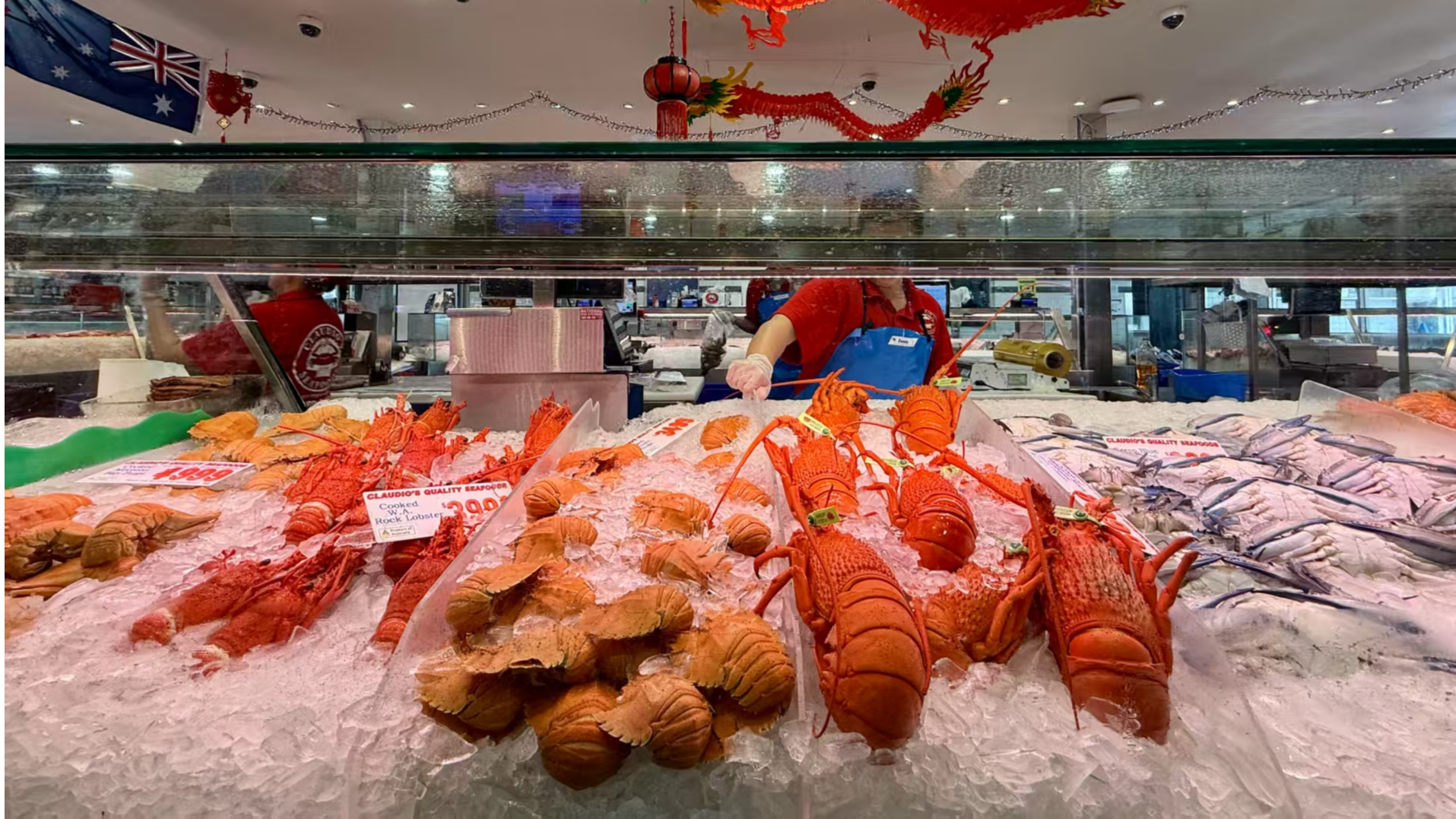
The resumption of the lobster trade between China and Australia will not only further promote economic and trade ties between the two countries but will also contribute positively to both regional and global economies, said government officials and experts.
“Australian rock lobster is of high quality and is loved by consumers from all over the world,” said Chinese Ambassador to Australia Xiao Qian in an exclusive interview with China Daily.
Xiao said that lobster is an important export agricultural product of Australia, employing many Australians.
READ MORE: Wang Yi: China-Australia ties back on track, to move forward
Amid factors such as the sluggish global economic recovery, the lobster fishery is facing great pressure in production and management.
With China's huge consumer market and strong demand, Australia attaches great importance to lobster exports.
The import of lobsters from Australia to China resumed last December, when China started again its port inspection and quarantine of relevant products.
Xiao said this is an important benefit to China-Australia relations and practical cooperation between the two countries.
It will bring more high-quality products at low prices to Chinese consumers, and will also create more jobs and economic benefits for the Australian lobster industry, benefiting the people of both countries, Xiao added.
“One of the things my government is very proud of … is repairing the relationship with China. Since Christmas Day, 565,000 kilos of lobster have landed in China, with 760 individual consignments,” Australian Prime Minister Anthony Albanese told Australian media on Jan 10.
Last October, Albanese met Chinese Premier Li Qiang during the East Asia cooperation leaders’ meetings in Vientiane, Laos. After the meeting, the Australian government announced it had agreed on a timetable with China for the full resumption of Australian live rock lobster exports by the end of the year.
This will save the jobs of 3,000 Australians employed in the industry, mostly in Western Australia. In 2019, China’s market was worth over AU$700 million ($442.6 million), according to information released by the Australian Government.
Since December Hema, the Chinese supermarket under Alibaba Group has also reinstated the supply of related goods. According to Kun Yi, the procurement manager of Hema fresh products department, Australian lobsters at Hema are currently selling like hotcakes, with monthly sales increasing by 2-3 times compared to the same period in the past.
Australian rock lobster has long been prized in China for its quality, taste and sustainability credentials. The resumption of trade will see this premium product once again available to Chinese consumers, while supporting thousands of jobs in Australia's coastal communities, according to a media statement from the Seafood Industry Australia, the national body representing the Australian seafood industry.
This critical achievement demonstrates that Australia-China trade relations are progressing positively, creating value and benefits for all involved, observers said.
Vaughn Barber, chair of the China-Australia Chamber of Commerce, said this is a pivotal moment for the Australian fisheries sector and broader bilateral trade relations.

Barber noted that lobster is a high-value export for Australia, and China has historically been its largest market.
Australian lobster exporters, such as Orient Fisheries Australia, will benefit from renewed access to China's vast market, boosting revenue and creating jobs in the fisheries industry, he said.
“By reopening trade in this key area, Australia could see increased opportunities for its agricultural and seafood exports, reinforcing its reputation as a high-quality producer,” Barber added.
In addition to lobsters, Australian products such as wine and beef have also returned to the Chinese market.
Xiao noted that over 90 percent of Australia's iron ore exports are destined for China, providing crucial support for related industries. Meanwhile, Chinese electric vehicles (EVs) are well-received by Australian consumers, injecting new momentum into Australia's energy transition.
“We are looking forward to deeper integration between Chinese-style modernization and future Australian manufacturing,” Xiao said.
He added that China looked forward to strengthening cooperation in traditional areas such as energy, mining, and agriculture, and further expanding cooperation in emerging areas such as green development, digital economy, scientific and technological innovation, and the health industry.
People are also looking forward to the two countries’ complementary advantages could transform into a strong driving force for the common development of China and Australia, Xiao said, and it could inject more positive energy into the sustained recovery of the economies of the two countries, the region, and even the world.
China is Australia's largest trading partner. The economies of the two countries are highly complementary and there is great potential for future cooperation.
There is both strong economic reasoning and institutional support for sustained growth in trade between the two countries, said Warwick Powell, an adjunct professor at Queensland University of Technology.
“Chinese enterprises and end consumers hold Australian products in high regard. Australia benefits from a trade surplus with China,” Powell said.
READ MORE: China, Australia to foster stable development of partnership
There is a free trade agreement between China and Australia, and both are also participant members of the Regional Comprehensive Economic Partnership (RCEP) agreement, Powell noted.
Powell said that this could be further reinforced by China’s application to join the Comprehensive and Progressive Agreement for Trans-Pacific Partnership being approved by CPTPP members, which includes Australia.
“Mutual confidence in the relevance of multilateral trade institutions like the WTO is also critical,” said Powell.
Wang Ying in Shanghai contributed to this story.
Contact the writer at xinxin@chinadaily.com.cn


